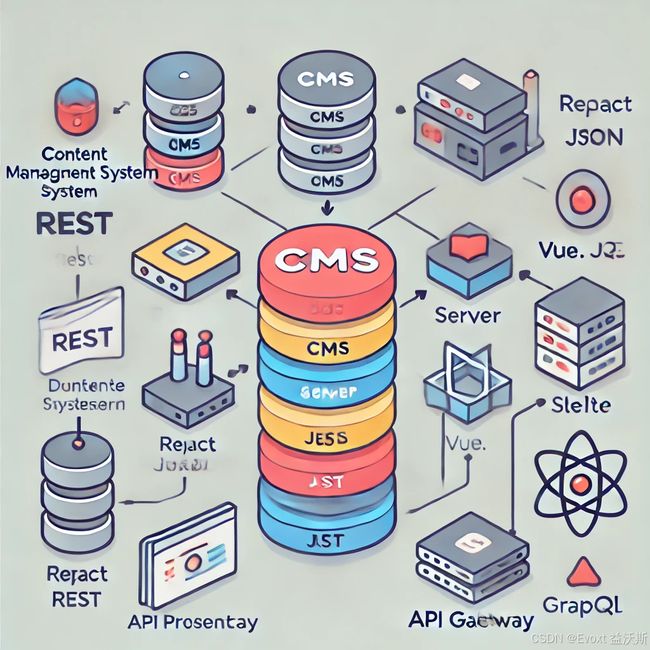Mastering Website Development in 2025: Trends, Tools, and Strategies
As we navigate the rapidly evolving digital landscape of 2025, web development is embracing innovative tools and methodologies that are redefining the way developers build and deploy websites. Whether you’re a seasoned developer or a newcomer eager to learn more, understanding the emerging trends and technologies is essential for staying ahead of the curve. In this article, we explore the latest advancements and offer insights to help you master modern website development.
Embracing the Latest Technologies
The backbone of any successful website lies in the technology stack you choose. Today’s developers have a wealth of options to create dynamic, scalable, and high-performance websites.
Modern Content Management Systems
While traditional platforms like WordPress and Drupal continue to serve content-heavy sites well, the surge of headless CMS platforms is transforming the way content is managed and delivered. These systems separate the back-end from the front-end, offering unparalleled flexibility and performance for complex, multi-channel digital experiences.
Cutting-Edge Front-End Frameworks
On the front-end, frameworks such as React, Vue.js, and Svelte remain at the forefront of web development. They empower developers to build responsive, interactive user interfaces with ease. Additionally, the growing popularity of utility-first CSS frameworks is streamlining styling practices, allowing for rapid development without sacrificing design quality.
Evolving Back-End Technologies
On the server side, Node.js and Python (with frameworks like Django and Flask) continue to be stalwarts in the industry. However, for projects where performance and safety are critical, Rust is emerging as a compelling choice. Its robust handling of concurrency and memory management makes it ideal for modern, high-demand applications.
Low-Code/No-Code Platforms
The rise of low-code and no-code solutions, such as Bubble, OutSystems, and Webflow, is democratizing website development. These platforms enable rapid prototyping and deployment, making it easier for businesses to launch MVPs and internal tools quickly, without sacrificing quality or scalability.
The Role of AI in Development
Artificial intelligence is transforming every aspect of web development. AI-powered coding assistants like GitHub Copilot are streamlining repetitive tasks, while AI-driven analytics and testing tools enhance performance and security. Incorporating AI not only accelerates development cycles but also helps maintain robust and error-free codebases.
Navigating Global Market Trends
Understanding regional trends is critical for developing websites that resonate with diverse audiences. In North America and Europe, there’s a high demand for headless CMS solutions and custom front-end experiences. Meanwhile, markets in China are leaning towards low-code enterprise solutions combined with advanced AI analytics. In regions like India and Southeast Asia, platforms like WordPress and other low-code tools continue to thrive, especially among small and medium businesses. Meanwhile, innovative digital experiences powered by experimental AI are making waves in Japan and South Korea.
Tailoring your approach based on these regional insights ensures that your website performs optimally regardless of location. This might involve localizing content, optimizing for varying internet infrastructures, or adopting region-specific design practices.
Prioritizing Security and User Experience
In an era where cyber threats are ever-present, robust security measures are non-negotiable. Encrypting sensitive data, implementing secure authentication protocols, and continuously monitoring for vulnerabilities are essential practices. Regular software updates and compliance with local data protection regulations further safeguard your site against potential threats.
User experience remains at the heart of successful website development. Fast load times, intuitive interfaces, and mobile-first designs are crucial for engaging users. Tools like Lighthouse can help identify performance bottlenecks, ensuring that your website not only looks good but also performs seamlessly across all devices.
Strategic Domain and Hosting Decisions
Behind every high-performing website is a solid domain and hosting strategy. Cloud-based hosting solutions offer the scalability and flexibility required to handle fluctuating traffic, while proper domain configuration and SSL certification enhance both speed and security. Investing in a reliable cloud hosting provider can significantly reduce downtime and provide a robust foundation for your digital presence.
Final Thoughts
The landscape of website development in 2025 is characterized by rapid innovation and a blend of traditional and emerging technologies. By embracing modern CMS architectures, leveraging advanced front-end and back-end frameworks, and integrating AI into your workflows, you can build websites that are not only visually stunning but also robust and scalable.
Staying informed about global market trends and prioritizing security and user experience are critical to maintaining a competitive edge. Whether you're building a small business site or a large-scale enterprise platform, the key to success lies in adopting a flexible, forward-thinking approach. Embrace these trends, experiment with new tools, and prepare to thrive in the dynamic world of web development.